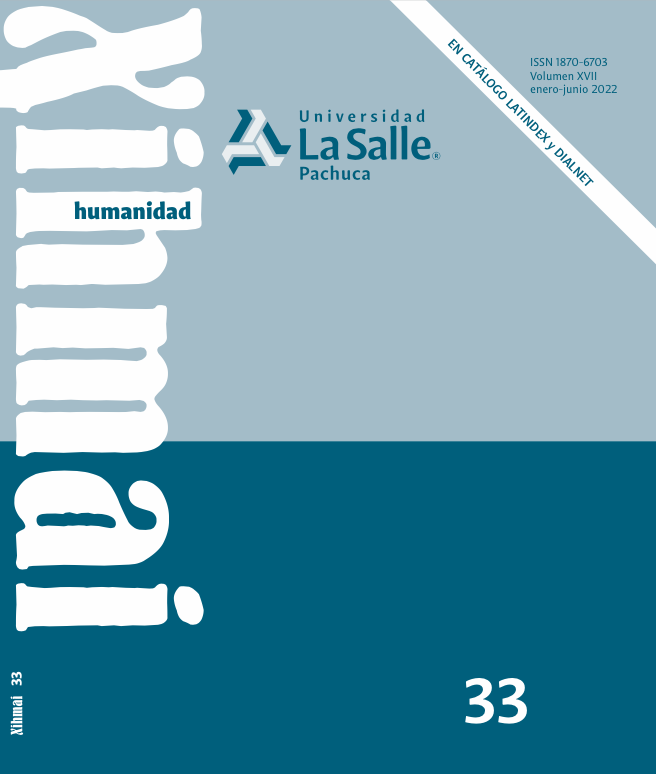ANALYSIS OF THE IMPACT ON THE EMPOWERMENT OF WOMEN THROUGH THE PRACTICE OF POLE DANCE
DOI:
https://doi.org/10.37646/xihmai.v17i33.546Keywords:
Pole Dance, Solutions Intervention Model, empowerment, participation, recklessness, external influences, independence, equality, social satisfaction, securityAbstract
This article presents the results of the impact of Pole Dance as a therapeutic tool that favors the empowerment of women. Interviews were conducted at the international level, aimed at professionals who instruct this discipline; to the students who practice it, the Questionnaire to Measure the Empowerment of Women (Hernández and García, 2008) was applied, this tool explores 7 factors: recklessness, external influences, independence, equality, participation, social satisfaction and security, applying and analyzing it under the Solution-Centered Psychotherapeutic Intervention Model, which is within the theory of the psychotherapeutic approach of Systemic Family Therapy. The purpose of his analysis is to know the level of empowerment that is manifested in practitioners of Pole Dance, thus taking into account the benefits and psychological implications that derive from said practice. Finding that the system that develops in the group that takes class, impacts at the individual level, showing changes in behavior and self-esteem, which in turn influence their family and couple system in which they develop.
Downloads
References
Beyebach, M. (2014). La Terapia Familiar Breve Centrada en Soluciones. Universidad Pública de Navarra. http://aetsb.org/wp-content/uploads/2021/04/Capitulo-12.-El-modelo-TCS-abril-2014.pdf
Carreño-Bustamante, T. M.; González-Carreño, V. & Gallego-Henao, L. E. (2017). Empoderamiento de Mujeres Cabeza de Familia, Un Reto Social. Revista Jurídicas, 14(2), 46–62. https://revistasojs.ucaldas.edu.co/index.php/juridicas/article/view/3250 DOI: https://doi.org/10.17151/jurid.2017.14.2.4
Castello, O. (2006, abril 12). Pensamiento sistémico y desarrollo de la resiliencia. [Mensaje en un blog] Gestiopolis. https://www.gestiopolis.com/pensamiento-sistemico-y-desarrollo-de-la-resiliencia/
División para el adelanto de la Mujer. (2007). La Mujer en el 2000 y después: Mujer, igualdad de géneros y deporte. Secretaria de las Naciones Unidas.
Ezequiel, B. (2009). Las psicoterapias. Psiencia, Revista Latinoamericana de Ciencia Psicológica, 1(1), pp. 1-9. https://www.redalyc.org/pdf/3331/333127084005.pdf
Falcón, J. (2020, febrero 11). El papel de la mujer en la sociedad. [Mensaje en un blog] Agenda Mexiquense. http://agendamexiquense.com.mx/papel-la-mujer-en-la-sociedad/
Gómez, E. & Kotliarenco, M. A. (2010). Resiliencia Familiar: un enfoque de investigación e intervención con familias multiproblemáticas. Revista de Psicología de la Universidad de Chile, 19(2), pp. 103-132. https://repositorio.uchile.cl/bitstream/handle/2250/129448/Resiliencia-familia-un-enfoque-de-investigacion-e-intervencion-con-familias-multiproblematicas.pdf?sequence=1&isAllowed=y DOI: https://doi.org/10.5354/0719-0581.2010.17112
Hernández, J. & García, R. (2008). Instrumento para medir el empoderamiento de la mujer. Universidad Juárez Autónoma de Tabasco. http://cedoc.inmujeres.gob.mx/documentos_download/101158.pdf
Hoffman, L. (1987). Fundamentos de la terapia familiar. Un marco conceptual para el cambio de sistemas. Fondo de Cultura Económica.
Hudson, W. & Weiner, M. (1990). En busca de soluciones: un nuevo enfoque en psicoterapia. Paidós.
Jiménez, A. (2015). Perspectiva de Género en Terapia Familiar. Escuela Vasco Navarra de Terapia Familiar.
Márquez, T. (2019). Cultura, Deporte y Mujer: Empoderar a Mujeres Refugiadas Mediante la Práctica Deportiva. [Trabajo Fin de Grado, Universidad de Sevilla]. https://idus.us.es/handle/11441/91112
Moretti, M. J. (2019). Pole dance y nuevas performatividades: del estereotipo a la transformación del pole como deporte. Estudio de caso de los polers en Quito. [Tesis de Maestría, Facultad Latinoamericana de Ciencias Sociales]. http://hdl.handle.net/10469/15502
ONU Mujeres. (2019, octubre 9). El Progreso de las Mujeres en México. Todas las familias deberían ser un espacio de igualdad y justicia, sin embargo, con frecuencia en ellas se vulneran los derechos de mujeres y niñas. [Mensaje en un blog] ONU Mujeres. https://mexico.unwomen.org/es/noticias-y-eventos/articulos/2019/10/el-progreso-de-las-mujeres-en-mexico
Pérez, M. & Vázquez, V. (2009). Familia y empoderamiento femenino: ingresos, trabajo doméstico y libertad de movimiento de mujeres chontales de Nacajuca, Tabasco. Convergencia, 16(50), pp. 187–218. http://www.scielo.org.mx/scielo.php?script=sci_arttext&pid=S1405-14352009000200008
Rosas, M. (2018). Revisión sistémica de la literatura sobre la teoría general de los sistemas. [Tesis de Licenciatura, Institución Universitaria Politécnico Grancolombiano, Facultad de Ciencias Sociales] http://alejandria.poligran.edu.co/bitstream/handle/10823/1441/Trabajo%20de%20grado%20final-Maria%20Alejandra%20Rosas%20Toro.pdf?sequence=1&isAllowed=y
Salazar, V. (2016). El pole fitness como propuesta metodológica de entrenamiento para el desarrollo de la fuerza y la flexibilidad. [Tesis de Licenciatura, Universidad de Cuenca, Ecuador]. http://dspace.ucuenca.edu.ec/handle/123456789/26992
Schuler, M. (1997). “Los derechos de las mujeres son derechos humanos: la agenda internacional del empoderamiento". En M. León (comp.) Poder y Empoderamiento de las Mujeres. TM editores.
Valenzuela, S. (2019). Autoconcepto en un grupo de mujeres que practican Pole Dance en una academia del municipio de Bello Antioquia. [Tesis de Licnciatura, Corporación Universitaria Minuto de Dios sede Bello]. https://repository.uniminuto.edu/jspui/bitstream/10656/10630/1/T.P_ValenzuelaBoteroSusana_2019.pdf
Watzlawick, P.; Helmick, J. & Jackson, D. (1985). Teoría de la comunicación humana Interacciones, Patologías y Paradojas. Editorial Herder.
Downloads
Published
How to Cite
Issue
Section
License
Copyright (c) 2022 Fernando Pelaez Castañeda

This work is licensed under a Creative Commons Attribution 4.0 International License.
Authors who publish in this journal agree to the following terms:
Authors retain copyright and grant the journal right of first publication, with the work licensed under a Creative Commons Attribution 4.0 License, which allows others to use the published work as long as they acknowledge the authorship of the work and its first publication in this journal.
Authors may make separate, additional contractual arrangements for non-exclusive distribution of the published version of the article in this journal (e.g., posting it to an institutional repository or publishing it in a book) as long as they clearly indicate that the work was first published in this journal.
Authors are permitted and encouraged to share their work online (for example, via institutional repositories or personal websites) prior to and during the manuscript submission process, as it can lead to productive exchanges and to increased and more rapid citation of the published work.









